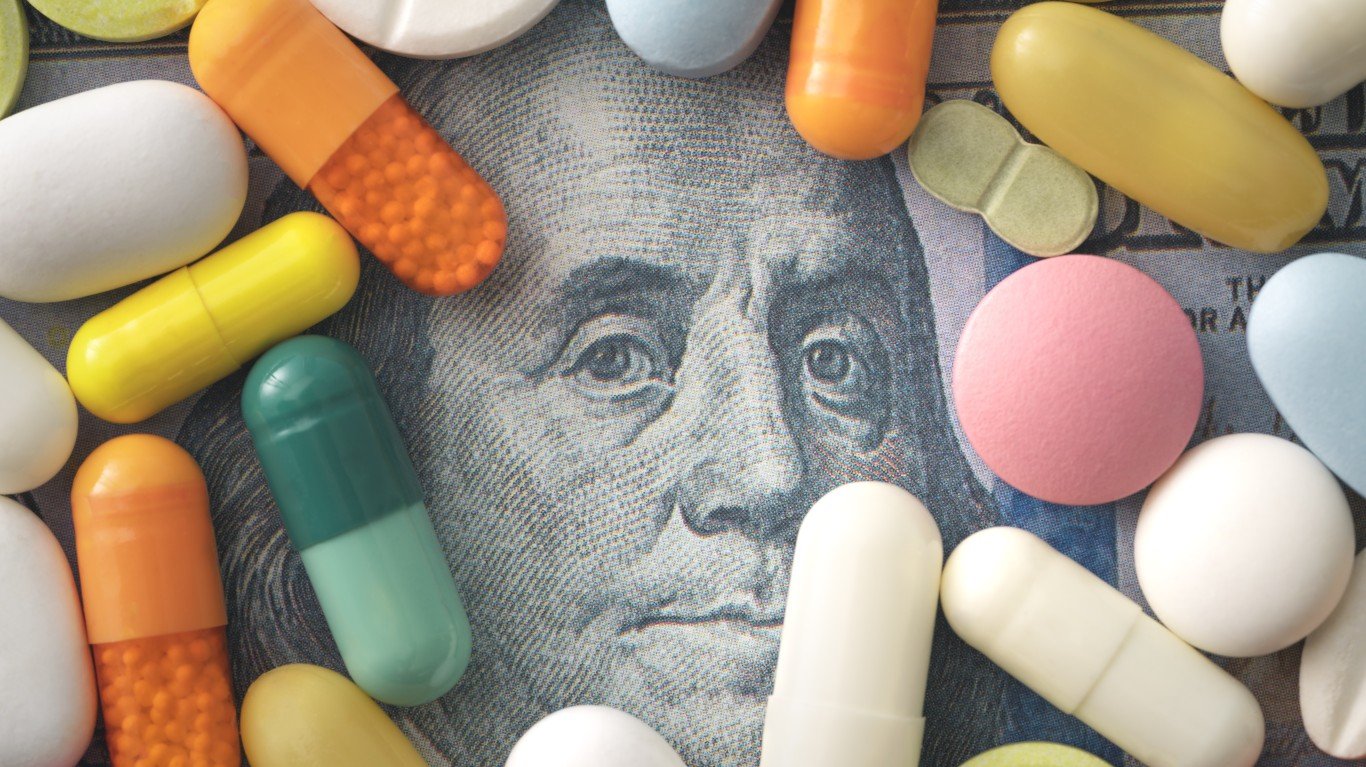

When companies run into legal issues in which they face potentially endless numbers of trials in numerous venues in America, it can create a tough time managing them. Johnson & Johnson (NYSE: JNJ) faces a wave of lawsuits over its role in the opioid addiction that has swept through America. And hearing about a single case going against Johnson & Johnson to the tune of $572 million sounds on the surface like it could be devastating.
It is important to consider that the largest companies in America, Johnson & Johnson among them with a value of nearly $350 billion, have very deep pockets, many avenues to raising capital to buffer themselves and their shareholders against what might otherwise be a catastrophic wipeout for smaller companies. This is an instance when Johnson & Johnson is trading higher on the news, but some smaller public companies tied into the opioid crisis are taking it on the chin.
An Oklahoma judge ruled on Monday afternoon that Johnson & Johnson’s role in promoting and marketing opioids helped contribute to Oklahoma’s state opioid crisis. While the ruling was set at more than $572 million against the company, it turns out that some analysts on Wall Street were expecting that the dollar-cost might be far worse. Little surprise, Johnson & Johnson has already said that it plans to appeal this case.
Johnson & Johnson and other big pharmaceutical companies and drug distributors face countless opioid-related legal cases in many venues in the United States. Johnson & Johnson is said to have had just 1% market share in opioids in Oklahoma, and rivals Purdue and Teva had been reported as having settled their cases in Oklahoma for $270 million and $85 million, respectively.
What matters about Oklahoma is how it might be used as a model for other states in America to determine a total outcome. According to the World Population Review site, Oklahoma’s 2019 population estimate of about 3.95 million people ranks as 28th in the order of the 50 states, plus Puerto Rico and Washington, D.C., by population, though it was about 1.19% of the total U.S. population.
If legal verdict scorers try to use this Oklahoma ruling as a model, there are several ways to look at it on a static basis. The actual ruling said, “J&J’s opioid marketing, in its multitude of forms, was false, deceptive and misleading ” Assume that Johnson & Johnson’s appeal actually shaves off some of the verdict, even down to $500 million, and then come up with a blend that the model could average the same in 50 states and Puerto Rico and Washington, D.C. That’s $26 billion.
If verdict scorers want to use a population ratio at 1.19% for Oklahoma’s weight in the entire nation with a $500 million base case, then the total could be somewhere around $42 billion.
Not everyone agrees that this verdict should be construed as a victory. Berenberg Capital Markets reportedly has said that Johnson & Johnson may now be open to as much as $150 billion in damages, when adding up state, federal, multi-district litigation and other regulatory jurisdictions into the mix.
Thank you for reading! Have some feedback for us?
Contact the 24/7 Wall St. editorial team.
 24/7 Wall St.
24/7 Wall St.


